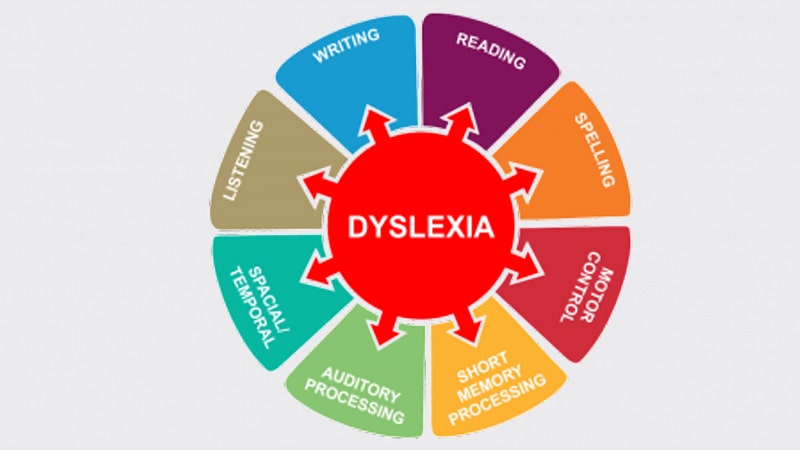Understanding Dyslexia
Developmental dyslexia is a common learning disorder that you may have heard of and may arguably be the most prevalent learning disability today. In this post, we will be learning more about the whats (what is dyslexia, and what is the prevalence of dyslexia in Singapore), and the hows of dyslexia (how does dyslexia manifest, and how does dyslexia impact children). Afterwards, we will delve into available resources and support for children with dyslexia in Singapore.
What is Dyslexia?
Dyslexia is a learning disability that specifically impedes a person’s ability to read and/or write. Simply put, it is ‘an unexpected difficulty in reading in an individual who has the intelligence to be a much better reader’ (Wu, 2022)
Dyslexia is characterized by the following aspects:
- Brain-based origins: Studies have suggested that there are differences in the structure and functional activation of reading-related brain regions when comparing readers with dyslexia against typical readers.
- Hereditary in nature: A child with a parent that has dyslexia has a risk of 40-60% of developing dyslexia (Schumacher et al., 2007).
- Life-long condition: There is no ‘cure’ for dyslexia, but the effects of dyslexia can be mitigated with the right interventions and support.

(Dyslexia Organization Kenya, 2022)
Prevalence of Dyslexia in Singapore
In Singapore, the prevalence of dyslexia is estimated to be within the international range of 3% to 10% (Dyslexia, 2021). This underscores the importance of raising awareness and understanding about dyslexia within the Singaporean community. There are available resources in Singapore for individuals in dyslexia, which we will cover in the later part of this post.
Symptoms of Dyslexia in Children
- Dyslexia primarily affects how the brain processes written and spoken language, often making it challenging for individuals to read fluently and accurately. Children with dyslexia may display delays in developmental language milestones i.e., language acquisition, in terms of speaking and comprehending spoken language. Some challenges that children with dyslexia may face are (Roitsch & Maria, 2019):Reading: difficulties in decoding words, word recognition, comprehension of written text.
- Spelling: difficulties in spelling words correctly, which may impact their written communication skills.
- Phonological awareness: difficulties in identifying and manipulating the sounds in spoken aspects of language.
- Writing: difficulties in written expression, leading to problems in sentence structure, grammar, and overall composition.
Impact on Children
Dyslexia can have a profound impact on a child’s academic performance, self-esteem, and overall well-being. It can lead to frustration, anxiety, and a sense of inadequacy, especially in a traditional school setting where reading and writing play a central role in learning. Without proper support and understanding, children with dyslexia may struggle to reach their full potential and may experience challenges in various aspects of their lives.
Supporting Children with Dyslexia
As a parent, there are several ways to support a child with dyslexia: (i) identifying signs early and seeking appropriate help, (ii) emotional support, or (iii) enrolment in programs specifically designed to support individuals with dyslexia (Roitsch & Maria, 2019).
Below are some support programs offered in Singapore:
- Programs provided by the Dyslexia Association of Singapore, such as the Main Literacy Programme for primary and secondary school students.
- Learning Support Programme by the Ministry of Education (MOE) for Primary 1-2 students.
- School-based Dyslexia Remediation Programme by MOE for Primary 3-4 students.
Lastly, consider exploring resources such as audiobooks, assistive technology, and multisensory learning materials (check out our blog for posts on tips and reading recommendations!).
Conclusion
Understanding dyslexia and its impact on children is crucial for parents to provide the necessary support and resources for their child’s success. By recognizing the signs of dyslexia, seeking early intervention, and creating a supportive environment, parents can empower their children to thrive academically and emotionally. With the right support, individuals with dyslexia can develop their strengths, overcome challenges, and achieve their full potential.
References
Dyslexia. (2021). Dyslexia. Moe.gov.sg; MOE. https://www.moe.gov.sg/news/parliamentary-replies/20210104-dyslexia
Roitsch, J., & Maria, S. (2019). An Overview of Dyslexia: Definition, Characteristics, Assessment, Identification, and Intervention. ResearchGate; Science Publishing Group. https://www.researchgate.net/publication/337039884_An_Overview_of_Dyslexia_Definition_Characteristics_Assessment_Identification_and_Intervention
Schumacher, J., Hoffmann, P., Schmäl, C., Schulte-Körne, G., & Nöthen, M. M. (2007). Genetics of dyslexia: the evolving landscape. Journal of Medical Genetics, 44(5), 289–297. https://doi.org/10.1136/jmg.2006.046516
What is dyslexia? (2022, April 7). Dyslexia Organization Kenya. https://www.dyslexiakenya.org/blog/what-is-dyslexia/
Wu, C.-Y. (2022, August 1). What do we know about Dyslexia in Our Learners. Child and Human Development, Life@NIE SG®. https://nie.edu.sg/chd/topics/special-education/dyslexia
Home. (2024, January 29). Dyslexia Association of Singapore. https://das.org.sg/
Written by: Keval
Edited by: Serena and Michelle



